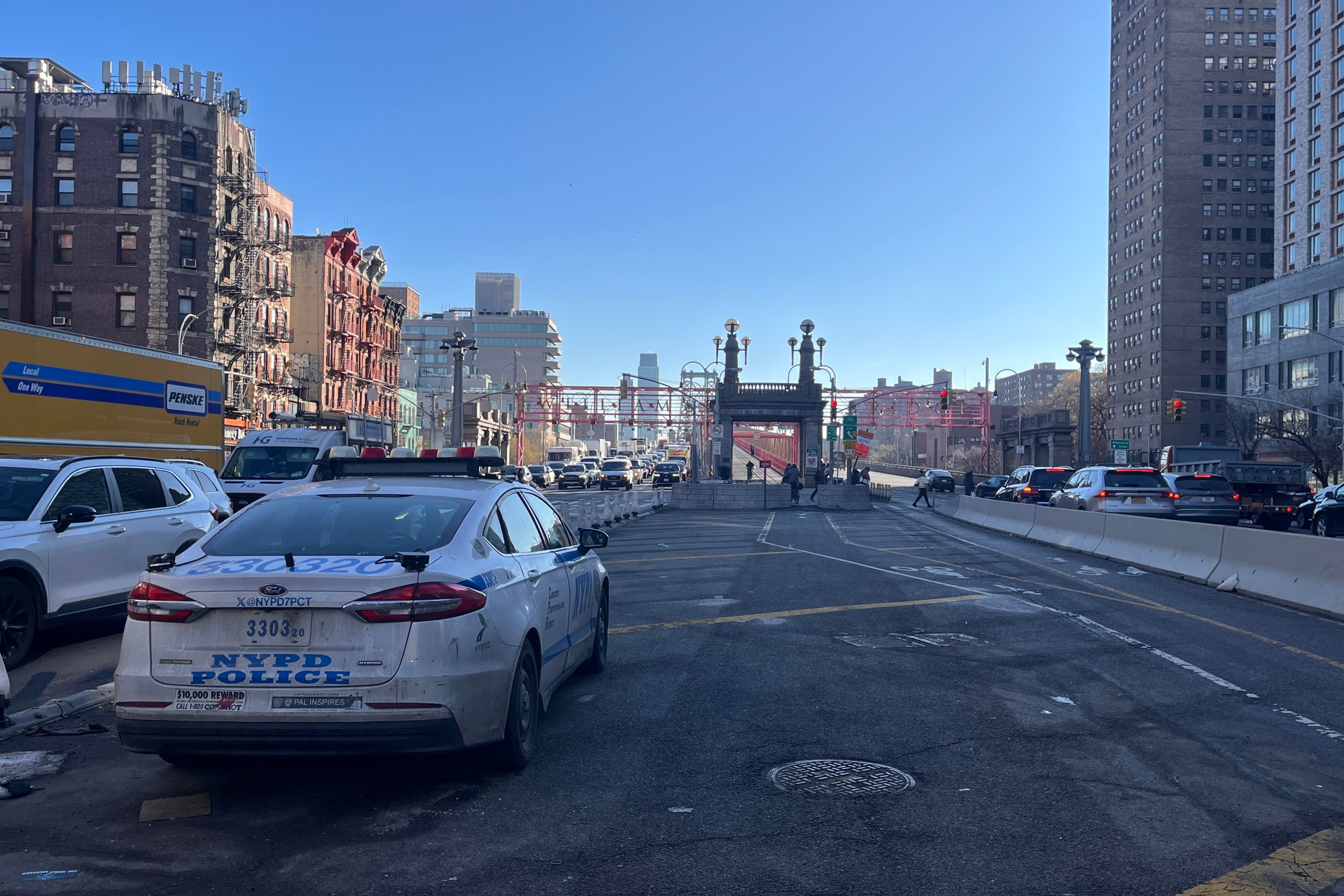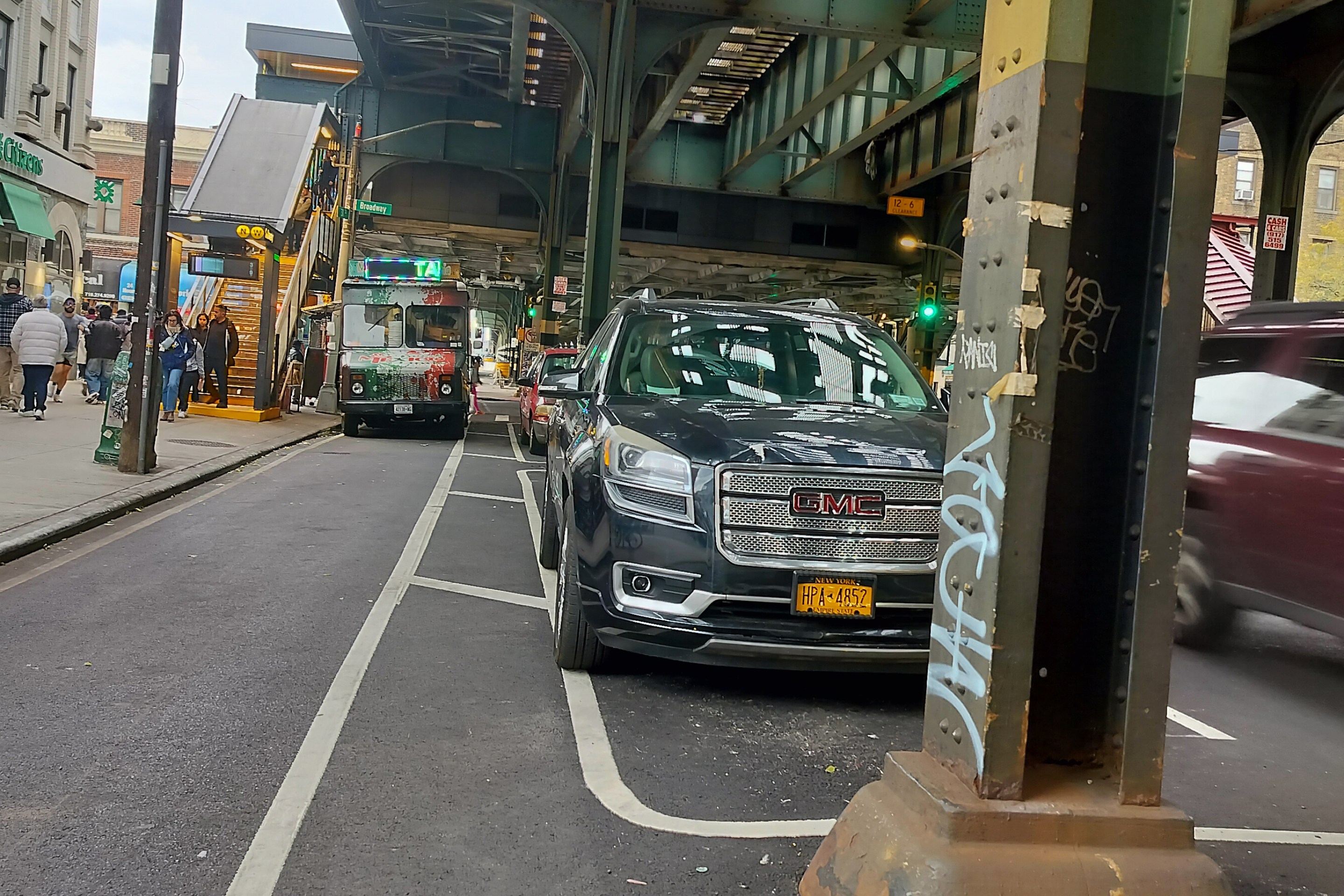Well, this explains why the Cuomo administration has been so reluctant to discuss how to pay for the new Tappan Zee Bridge. At a public meeting last night, Secretary to the Governor Larry Schwartz told the crowd that cash tolls would rise to $14 on the replacement bridge, with a slight discount for E-ZPass holders ($13.40) and a deeper discount for regular commuters ($8.40), the Journal News reports.

Those tolls would nearly triple current rates -- $5 cash toll, $4.75 E-ZPass, and $3 for commuters -- confirming the analysis by Charles Komanoff published on Streetsblog back in January.
Of course, the new, double-span bridge, which would be twice as wide as the current one, may not even provide rush-hour bus lanes for commuters who want a more affordable option.
At least Schwartz has now come clean about what it would take to pay for the bridge, but it is remarkable that the Cuomo administration is only now putting this figure before the public, after final bids have been submitted to construct the $5 billion project. The ballpark cost of $5 billion has been the standard reference point since the Cuomo administration ditched the transit components of the bridge last fall.
Komanoff was out in front on this one, and his warning from January is especially resonant in light of this new information. If tolls rise, trips across the bridge will fall, possibly to the point where revenue would not be sufficient to cover the carrying costs of the bridge. Komanoff referred to this scenario as a "death spiral" in which the new bridge simply can't pay for itself.
According to the state's Final Environmental Impact Statement (chapter 4, page 16 [PDF]), Tappan Zee tolls equivalent to those on the George Washington Bridge (slated to rise to $14 late in 2014), would result in an 8.3 percent decline in trips across the new bridge in 2017 compared to the present volume. That figure is very close to the average 8 percent drop in traffic forecast by Komanoff's model [XLS].
We don't quite have enough information to say whether this would set off a death spiral, but it's worth a second look at what it would mean if the traffic and toll equation doesn't add up. Komanoff wrote in January:
Is there a way out of a Tappan Zee “death spiral” in which no toll can generate enough revenue to pay bondholders? I see two possibilities. Either the Thruway Authority offloads some of the project’s carrying costs to other parts of its system or onto the State DOT’s budget. Or the powers-that-be trim the cost by shrinking the bridge. (Or some combination of the two.)
Offloading merely shifts costs to drivers elsewhere, or to taxpayers in general. A particularly worrying downside is that to come up with the funds, Albany might be forced to starve roads and bridges in other parts of the state, or even transit in and around NYC — not in a "one-shot," but year in and year out.
As for shrinking the bridge, trimming the cost to $3.5 billion — a number pulled out of a hat — could keep the required toll hike low enough that daily bridge crossings would be as likely to rise as fall. This would avert cascading toll hikes and allow the full cost to be covered with a toll between $5 and $12.
Of course, getting the cost down that far would probably require slimming the lane configuration to something close to the current one. Could traffic be accommodated? Yes, for the time being; and almost certainly over the long haul, by charging premium tolls during the relatively brief daily peaks.
The Cuomo administration filled in a major unknown about how the TZB would be paid for last night, but that is leading to even more questions about whether the region can afford the governor's vision of a gold-plated bridge for cars with no equivalent provision for transit.





